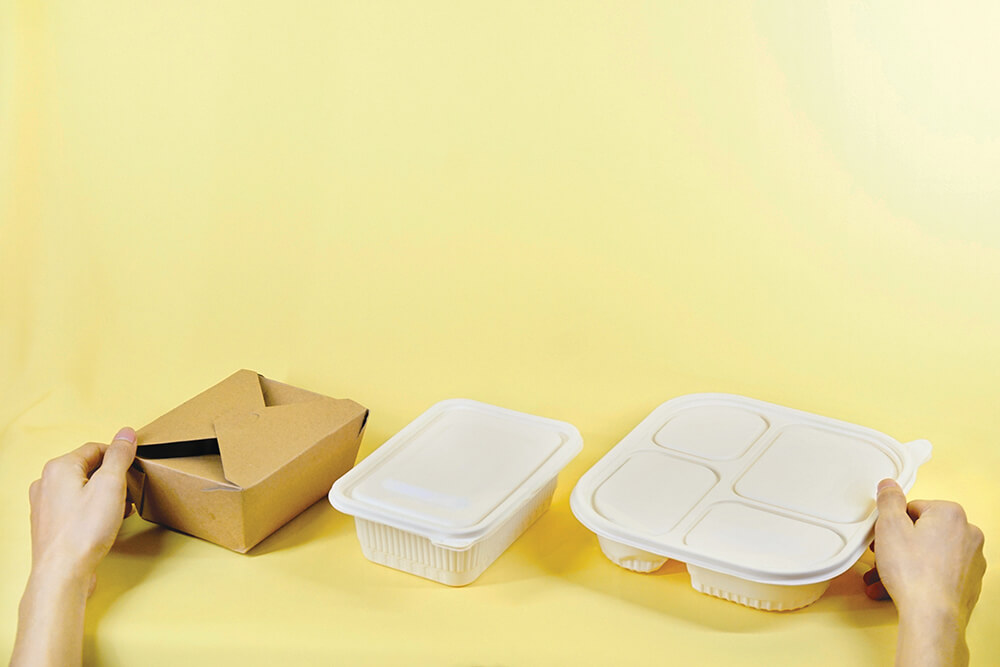 The Do’s and Don’ts of Product Packaging
The Do’s and Don’ts of Product Packaging
Product packaging can have a big impact on an item’s look, feel and usability, as well as consumer experience. When done well, it can help customers feel more confident in a business’s design and decision-making skills. On the other hand, bad packaging may cause someone to shop with another brand, even if they like what they purchased.
These are some of the most important do’s and don’ts of product packaging. With these best practices, you can balance the look and functionality with a design that will ensure your products ship well, stock easily and make it to your customers in perfect condition.
Do Keep It Simple
For packaging, simple is typically better.
On a shelf, you may be competing with a large number of other products for consumer attention. Even the most visually exciting or unique packaging can fall flat if it doesn’t do what it needs to. It must keep the product safe in the supply chain, at the store and en route to a customer’s home.
Simple or industry-standard designs — like square containers or tried-and-true spray bottle mechanisms — won’t stand out. However, they’re much more likely to be resilient and easy-to-use.
Complex packaging may also be more likely to induce what logistics experts and psychologists sometimes call “wrap rage” — the frustration customers can feel toward a container or package that is really difficult to open.
Complexity can be useful, but it has to serve a purpose. If an element of your packaging isn’t keeping the product safe during transit or making it easy to stack and shelve in-store, it may not be doing its job.
Do Think About Eco-Friendliness
More consumers want brands that take environmental stewardship seriously — and sometimes they may even pay more for sustainable and green products.
When selecting materials for your product containers, it’s worth considering where your packaging will end up after the product is in a consumer’s hands.
Often, you may be able to find an eco-friendly alternative that’s not too expensive and provides the same kind of support or structure that your product needs. For example, biodegradable plastics or repurposed cardboard packing can both sub in for environmentally unfriendly packaging — like bubble wrap and styrofoam packing peanuts.
If going fully green isn’t possible, a change here or there can still go a long way in making your brand seem more environmentally conscious to consumers.
Do Pick Materials That Prevent Spoilage
Food and beverage manufacturers face some unique challenges when it comes to shipping their products. They need to balance the cost of packaging against the variety of threats that food items will face. Light, bacteria, pests and even the air can damage foods as they travel to the store or a customer.
The right kind of packaging can prevent food spoilage in transit or while on the shelf. For example, tinted or opaque containers can prevent light-induced food spoilage. Modified atmosphere packaging replaces the air in a package with an inert gas to prevent oxidation, which can lead to unwanted changes in taste, texture and appearance.
Don’t Have a One-Size-Fits-All Approach
When designing your packaging, you may be tempted to adopt a standard set of materials for all your offerings. For example, you may buy the same size box in bulk and use it for all your products, regardless of actual size.
However, while this may provide some short-term savings, it can have some impacts in the long run.
Using the same size box can drive up your shipping costs, depending on who you ship with. Some carriers may charge by the size of your package rather than the weight.
If your products vary in size, you may also need to use a lot of packing material for smaller items. Customers may interpret this as wasteful, and the extra money you spend on packing may result in more spent than saved.
Selecting materials on a per-product basis and consolidating as possible is a better strategy than trying to make one set work for all your offerings.
Don’t Use Confusing or Nondescriptive Labeling
Package labeling should be as clear as possible. Within just a few seconds of scanning, customers should be able to understand what you’re selling and why it’s available.
If you’re highlighting specific benefits or features on a product’s container, make sure you’re speaking in a language customers will understand. For some products, this may mean swapping out industry-specific terminology for more accessible phrasing. For others, you may need to emphasize words and ingredients that will be understood by those in your target audience but may not have an obvious meaning to other consumers.
Don’t Skimp on Packing
A product that arrives damaged or broken can be a major headache for any customer.
With packing, too much is better than too little. When determining how much you’ll need for a given product, use enough to ensure it will arrive safely at the store or customer’s home every time.
You can also use tests, like a free-fall drop test, to see if your packaging is robust enough for the supply chain. Drop a packaged product from a height — anywhere between a few inches and a few feet, depending on package weight — at multiple orientations, including the sides, edges and corners of the box. This test will determine if your combination of box, packing, and tape or adhesive will keep your product secure in its packaging.
If the box crumples in — or the product is scuffed or broken by the impact — that’s a decent sign that some of your packages may not survive shipping. As a result, it may be a good idea to invest in more robust materials.
Package Products Effectively With These Tips
The right package for your product can have a big impact on customer satisfaction. Fortunately, the best practices are fairly simple. Robust boxes and packing materials will ensure your products get to customers unharmed. Clear labeling will let customers know what you’re selling. A few additional adjustments — like proportional boxes for different products and green packing materials — will help minimize shipping waste and boost your bottom line.
 Lexie is a web designer and UX strategist. She loves taking her goldendoodle on long runs and checking out local flea markets. Visit her blog, Design Roast, and follow her on Twitter @lexieludesigner.
Lexie is a web designer and UX strategist. She loves taking her goldendoodle on long runs and checking out local flea markets. Visit her blog, Design Roast, and follow her on Twitter @lexieludesigner.


